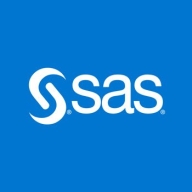

SAS Data Management and Cribl are two significant players in the data management arena, each offering distinct capabilities. Cribl seems to have the upper hand with its real-time data processing advantages, while SAS excels in data governance.
Features: SAS Data Management facilitates ETL, data integration, and governance with strong data quality controls. It stands out for its versatile data-cleaning functionalities and language flexibility. Cribl, on the other hand, excels in real-time data transformation, efficient log routing, and robust internal management features, supporting diverse data environments effectively.
Room for Improvement: SAS Data Management could enhance its user experience by simplifying its licensing model and centralizing database connections. Improvements in ETL functions and analytics tools, along with more flexible cloud options, are also advised. Cribl could benefit from better backward compatibility and enhanced logging/debugging features. More custom integration packs and improved documentation would further elevate user experience.
Ease of Deployment and Customer Service: SAS primarily offers on-premises deployment with some hybrid cloud options. Its customer service has mixed reviews, often collaborating with partners for support. Cribl, with more flexible cloud deployment, is well-supported, receiving positive feedback for clear documentation and regular updates.
Pricing and ROI: SAS Data Management is costly, delivering significant ROI in industries with complex reporting needs like pharmaceuticals. Its pricing might pose challenges for smaller businesses. Cribl provides a more competitive pricing structure, especially when compared to solutions like Splunk, offering value for mid-sized companies with growing data requirements.
The community, including the engineering and sales teams, is available on Slack and is very supportive.
Perhaps more flexibility in terms of metrics would be helpful.
There is significant room for improvement, especially with regard to using a hybrid approach that involves both CAS and persistent storage.
From my experience, SAS Data Management is an expensive tool.
The community on Slack is excellent for solving questions and getting ideas.
SAS Data Management stands out because of its data standardization, transformation, and verification capabilities.


Cribl optimizes log collection, data processing, and migration to Splunk Cloud, ensuring efficient data ingestion and management for improved operational efficiency.
Cribl offers seamless log collection directly from cloud sources, allowing users to visually extract necessary data and replay specific events for in-depth analysis. It provides robust management of events, parsing, and enrichment of data, along with effective log size reduction. Cribl is particularly beneficial for migrating enterprise logs, optimizing usage, and reducing costs while streamlining the transition between different log management tools.
What are Cribl's most important features?
What benefits and ROI should users look for?
Cribl is widely implemented in industries requiring extensive data management, such as technology and finance. Users leverage Cribl to handle log collection, processing, and migration efficiently, ensuring smooth operation and effective data analysis. It aids in managing temporary data storage during downtimes and better handling historical data, preventing data loss and allowing extended periods for viewing statistics and monitoring trends.
Every decision, every business move, every successful customer interaction - they all come down to high-quality, well-integrated data. If you don't have it, you don't win. SAS Data Management is an industry-leading solution built on a data quality platform that helps you improve, integrate and govern your data.
We monitor all Observability Pipeline Software reviews to prevent fraudulent reviews and keep review quality high. We do not post reviews by company employees or direct competitors. We validate each review for authenticity via cross-reference with LinkedIn, and personal follow-up with the reviewer when necessary.